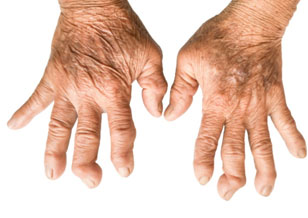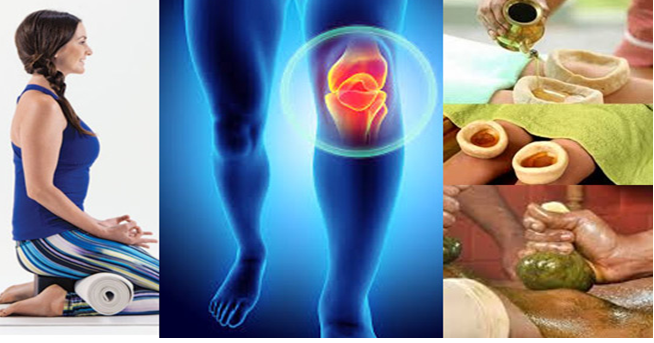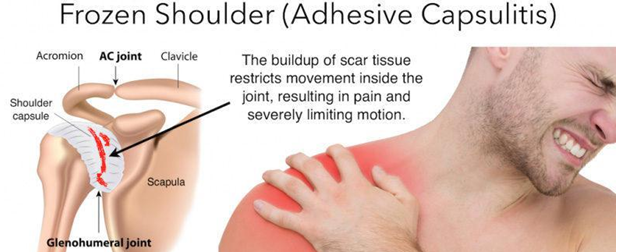Our Rheumatology department is providing the most effective treatment for patients through Ayurveda panchakarma, Ayurvedic medicines as per the disease status of the patients. Rheumatic diseases constitute limitations in performing roles relating to working life as well as family and social life .The occurance of rheumatic diseases is related not only to increased risk of different types of organic changes, but above all disability. So a rheumatic patient when treated properly gets improvement in regular life functions and the capacity to continue work, become an asset for the society.
Chaithanya Rheumatology department is trying to render it in the best possible manner


Knee osteoarthritis (OA), also known as degenerative joint disease of the knee, is typically the result of wear and tear and progressive loss of articular cartilage. It is most common in elderly women and men. Knee osteoarthritis can be divided into two types, primary and secondary. Primary osteoarthritis is articular degeneration without any apparent underlying reason. Secondary osteoarthritis is the consequence of either an abnormal concentration of force across the joint as with post-traumatic causes or abnormal articular cartilage, such as rheumatoid arthritis (RA). Osteoarthritis is typically a progressive disease that may eventually lead to disability.
Pathophysiology
Articular cartilage is composed primarily of type II collagen, proteoglycans, chondrocytes, and water. Healthy articular cartilage constantly maintains an equilibrium between each of the components so that any degradation of cartilage is matched by synthesis. Healthy articular cartilage is thus maintained. In the process of osteoarthritis, matrix metalloproteases (MMPs), or degradative enzymes, are overexpressed, disrupting the equilibrium and resulting in an overall loss of collagen and proteoglycans. In the early stages of osteoarthritis, chondrocytes secrete tissue inhibitors of MMPs (TIMPs) and attempt to increase synthesis of proteoglycans to match the degradative process. However, this reparative process is not enough. The loss in equilibrium results in a decreased amount of proteoglycans despite increased synthesis, increase in water content, the disorganized pattern of collagen, and ultimately loss of articular cartilage elasticity. Macroscopically these changes result in cracking and fissuring of the cartilage and ultimately erosion of the articular surface.
Although knee osteoarthritis is closely correlated with aging, it is important to note that knee osteoarthritis is not simply a consequence of aging, but rather its own disease. This is supported by the differences seen in cartilage with both osteoarthritis and aging. Furthermore, it the enzymes responsible for cartilage degradation are expressed in higher amounts in knee osteoarthritis, whereas they are at normal levels in the normal aging cartilage
Clinical Symptoms of Knee OA
Knee pain
Physical examination of the knee should begin with a visual inspection. With the patient standing, look for periarticular erythema and swelling, quadriceps muscle atrophy, and varus or valgus deformities. Observe gait for signs of pain or abnormal motion of the knee joint that can be indicative of ligamentous instability. Inspect the surrounding skin for the presence and location of any scars from previous surgical procedures, overlying evidence of trauma, or any soft tissue lesions.
Range of motion (ROM) testing is a very important aspect of the knee exam. Active and passive ROM with regard to flexion and extension should be assessed and documented.
Palpation along the bony and soft tissue structures is an essential part of any knee exam. The palpatory exam can be broken down into the medial, midline, and lateral structures of the knee.
AYURVEDIC MANAGEMENT
Ayurvedic treatment of Osteoarthritis prevents further deterioration in the joints and rejuvenates damaged cartilages. Vata-alleviating treatments through specific herbs are suggested for lubrication and strengthening of joints. (to be taken under supervision of Registered Ayurvedic physician)

i) Local application
ii) Snehana (external): massage with medicated oils
iv) Svedana (Medicated fomentation): ( localized or generalized hot fomentation)
PREVENTIVE MEASURES
Life Style Modifications – The following measures may reduce the risk of developing OA:
Do’s:
Intake of Madhura (sweet), Amla (sour), Lavana (salt) and Snigdha (unctuous) food, Garlic,· Ginger, Hingu, Black pepper etc
Regular habit of Exercising;
· Maintaining optimum weight;
· Avoiding excessive repetitive motions;
· Healthy diet;
· Protecting an injured joint from further damage
Don’ts:
Long fasting and excess of heavy food
· Awakening at night (Ratri jagaran)
,· Vega-vidharana (suppression of natural urges),
· Stress,
· Prolonged standing
,· Over exertion and injury to joints

HUMEROSCAPULAR ARTHRITIS
ADHESIVE CAPSULITIS
Affects people between 40 and 60 age group
Occurs in women greater than men
Symptoms
3 stages
Stage 1- stage of pain/ freezing stage- 3-6months
2nd stage- stage of stiffness- 3-18 months
Stage 3- stage of Recovery – 6months to 2 years
Stage of Pain
Stage 2-
STAGE 3-
OUR TREATMENT
According to ayurveda the whole body movements are controlled by vata.in this case it’s a joint disorder where the normal function is blocked by different factors either external or internal,they are called aaganthu(external) and nija(internal) Which will be blocking vata dosha and inturn vitating the dosha leading to a condition of decresed movements,the symptoms manifest according to the causative factor,
Medicinal Management(Oushadam)- Internal medicnes
This Herbal medicine strengthens the Nervous System and muscles along with anti inflamatory and analgesic in action with no side effects.
Local Measures(Sthanika Chikitsa)- External treatments